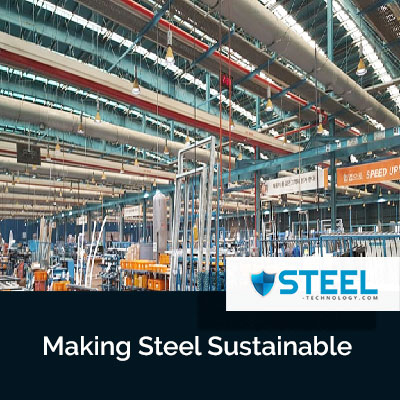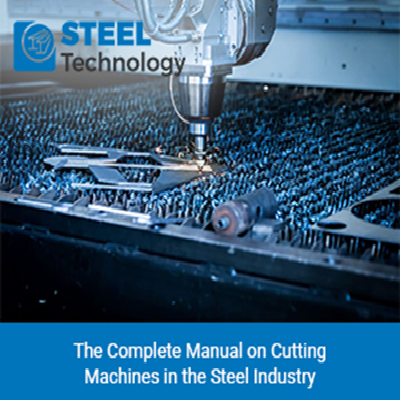Modern Rolling Mill Technologies and Their Advantages

Modern rolling mill technologies have evolved over the years to improve efficiency, precision, and product quality in the metal forming industry. Some key technologies and their advantages include:
Automation and Control Systems:
Automation and control systems have revolutionized the metal forming industry, particularly in rolling mills. These systems encompass a range of technologies designed to streamline and enhance the production process. The key advantage of these systems lies in their ability to provide a high level of precision and consistency in product quality.
With automated systems, the rolling process can be closely monitored and controlled in real-time. This leads to improved operational efficiency as manual intervention is minimized, reducing the likelihood of errors and variations in the final product. Additionally, automation enables the integration of various components within the rolling mill, creating a synchronized and efficient workflow.
The real-time monitoring capabilities of these systems allow for quick adjustments to process parameters, ensuring optimal performance and minimal waste. This level of control enhances the overall reliability of the rolling mill and contributes to a more predictable and stable manufacturing environment.
Computer Numerical Control (CNC) Systems:
CNC systems play a pivotal role in modern rolling mills, offering a high degree of precision and flexibility in the manufacturing process. These systems utilize computer-based algorithms to control the movement and operation of machinery, resulting in accurate and repeatable production of complex shapes.
| Also Read: Rolling Into Precision: Innovations in the Steel Industry |
The advantages of CNC systems extend to their ability to handle various materials and product specifications with ease. This flexibility is particularly valuable in a dynamic manufacturing environment where diverse product requirements are common. CNC technology also contributes to faster setup times, as adjustments to tool positioning can be made with precision, reducing the time needed for trial and error.
In summary, CNC systems provide the accuracy and adaptability necessary for modern rolling mills to meet the demands of diverse product portfolios and maintain high standards of quality.
| Also Read: Crafting Excellence: Forming and Finishing Innovations in the Steel Industry |
Industry 4.0 Integration:
Industry 4.0, the fourth industrial revolution, involves the integration of digital technologies to create a "smart" manufacturing environment. In the context of rolling mills, Industry 4.0 integration allows for seamless connectivity and data exchange between different manufacturing systems.
The advantages of Industry 4.0 integration are far-reaching. Real-time monitoring and communication between various components of the rolling mill facilitate data-driven decision-making. Predictive maintenance, enabled by continuous monitoring, helps reduce unplanned downtime by identifying potential issues before they lead to equipment failures.
The implementation of data analytics in Industry 4.0 enhances the overall efficiency of the rolling process. By analyzing large datasets, manufacturers can gain insights into process optimization, energy consumption patterns, and quality control. This information empowers decision-makers to make informed choices that improve productivity and resource utilization.
Rolling Process Simulation:
Rolling process simulation involves the use of computer models to predict and optimize the behavior of materials during the rolling process. This technology is instrumental in reducing trial and error in process development and enhancing the understanding of material behavior under different conditions.
The advantages of rolling process simulation are multi-faceted. Predictive modeling allows manufacturers to optimize rolling parameters, such as temperature, speed, and pressure, without the need for extensive physical trials. This not only accelerates the development process but also minimizes material waste.
Additionally, simulation tools provide insights into how different variables impact the final product. Manufacturers can experiment with various parameters virtually, leading to a more informed and efficient approach to process design. The result is improved product quality and a streamlined development process.
Hydraulic and Pneumatic Systems:
Hydraulic and pneumatic systems play a critical role in providing precise control over the rolling process. These systems use fluid power to generate, control, and transmit forces, ensuring accurate pressure and speed control during rolling operations.
The advantages of hydraulic and pneumatic systems include enhanced precision in the application of force, leading to improved product quality. The ability to control pressure and speed contributes to a more efficient and reliable rolling process. Additionally, these systems are known for their energy efficiency, as they can be designed to operate with minimal waste and reduced environmental impact.
Safety is another key advantage of hydraulic and pneumatic systems. Automated control systems can incorporate safety features, such as emergency stops and pressure sensors, to protect both equipment and operators from potential hazards.
Advanced Roll Materials and Coatings:
The use of advanced roll materials and coatings is essential for extending the life of rolls and improving product quality in rolling mills. Rolls are subjected to extreme conditions, including high temperatures, pressure, and mechanical stress. Utilizing materials with enhanced wear resistance and durability is crucial for efficient and cost-effective operations.
The advantages of advanced roll materials and coatings include prolonged roll life, reducing the frequency of maintenance and replacement. This, in turn, contributes to increased operational efficiency and reduced downtime. Improved surface finishes on rolls also translate to better product quality, as they minimize defects and imperfections in the rolled material.
Resistance to wear, corrosion, and thermal stresses are critical properties of advanced roll materials. These characteristics ensure that rolls maintain their integrity and performance under challenging operating conditions, ultimately benefiting the overall reliability and productivity of the rolling mill.
Inline Measurement and Inspection Systems:
Inline measurement and inspection systems are designed to monitor product dimensions and surface quality in real-time during the rolling process. These systems contribute significantly to quality control and defect detection, providing immediate feedback for corrective actions.
The advantages of inline measurement and inspection systems are evident in the improvement of overall product quality. By detecting deviations from specifications or identifying defects as they occur, manufacturers can take prompt corrective measures, reducing the production of substandard material and minimizing waste.
Real-time monitoring also enhances efficiency by reducing the need for post-process inspections, as issues can be addressed immediately. The integration of these systems into the rolling mill contributes to a more streamlined and responsive manufacturing process.
Energy Efficiency Solutions:
Energy efficiency is a crucial consideration in modern rolling mills to reduce operational costs and minimize environmental impact. Advanced energy efficiency solutions encompass a range of technologies aimed at optimizing energy consumption during the rolling process.
The advantages of energy efficiency solutions include reduced energy consumption, contributing to cost savings and sustainability. Implementing regenerative braking systems, for instance, allows mills to recover and reuse energy during deceleration, improving overall energy utilization. Lower energy consumption also translates to a reduced carbon footprint, aligning with environmentally conscious manufacturing practices.
Manufacturers benefit not only from cost savings but also from the positive public perception associated with sustainable and energy-efficient production practices.
Advanced Roll Gap Control:
Roll gap control is a critical aspect of the rolling process, influencing product thickness, flatness, and overall quality. Advanced roll gap control technologies focus on improving precision and reliability in adjusting the distance between rolls during the rolling operation.
The advantages of advanced roll gap control are evident in the improved thickness and flatness control of rolled products. Precise adjustments lead to a more consistent final product, reducing variability and waste. Enhanced strip shape and profile accuracy contribute to the production of high-quality materials that meet stringent customer specifications.
Advanced roll gap control technologies often incorporate automation and feedback systems to continuously monitor and adjust the roll gap during the rolling process. This level of control is essential for achieving the desired product attributes reliably and efficiently.
Smart Manufacturing and IoT:
Smart manufacturing, facilitated by the Internet of Things (IoT), involves the integration of sensors, connectivity, and data analytics to create an intelligent and interconnected manufacturing environment.
The advantages of smart manufacturing and IoT in rolling mills are manifold. Real-time data analytics provide valuable insights into the performance of equipment, allowing for continuous optimization of processes. Remote monitoring and control capabilities enable manufacturers to manage and troubleshoot equipment from a distance, reducing the need for on-site intervention and minimizing downtime.
Proactive maintenance, enabled by IoT, involves monitoring the condition of equipment and predicting potential failures before they occur. This predictive approach helps prevent unplanned downtime, extending the lifespan of equipment and contributing to overall operational efficiency.
The implementation of smart manufacturing practices enhances overall equipment effectiveness (OEE), contributing to improved productivity, reduced waste, and better resource utilization.
In conclusion, modern rolling mill technologies encompass a diverse range of advancements that collectively contribute to higher efficiency, precision, and quality in metal forming processes. The integration of automation, advanced control systems, and digital technologies has transformed the traditional rolling mill into a sophisticated and interconnected system capable of meeting the demands of today's dynamic manufacturing landscape. As industries continue to evolve, the ongoing development and adoption of these technologies will play a pivotal role in shaping the future of metal forming and manufacturing as a whole.










